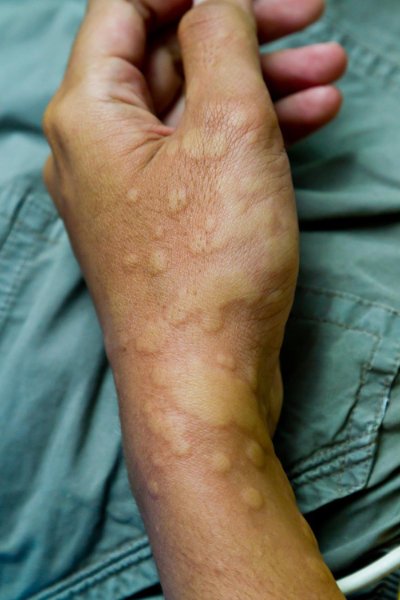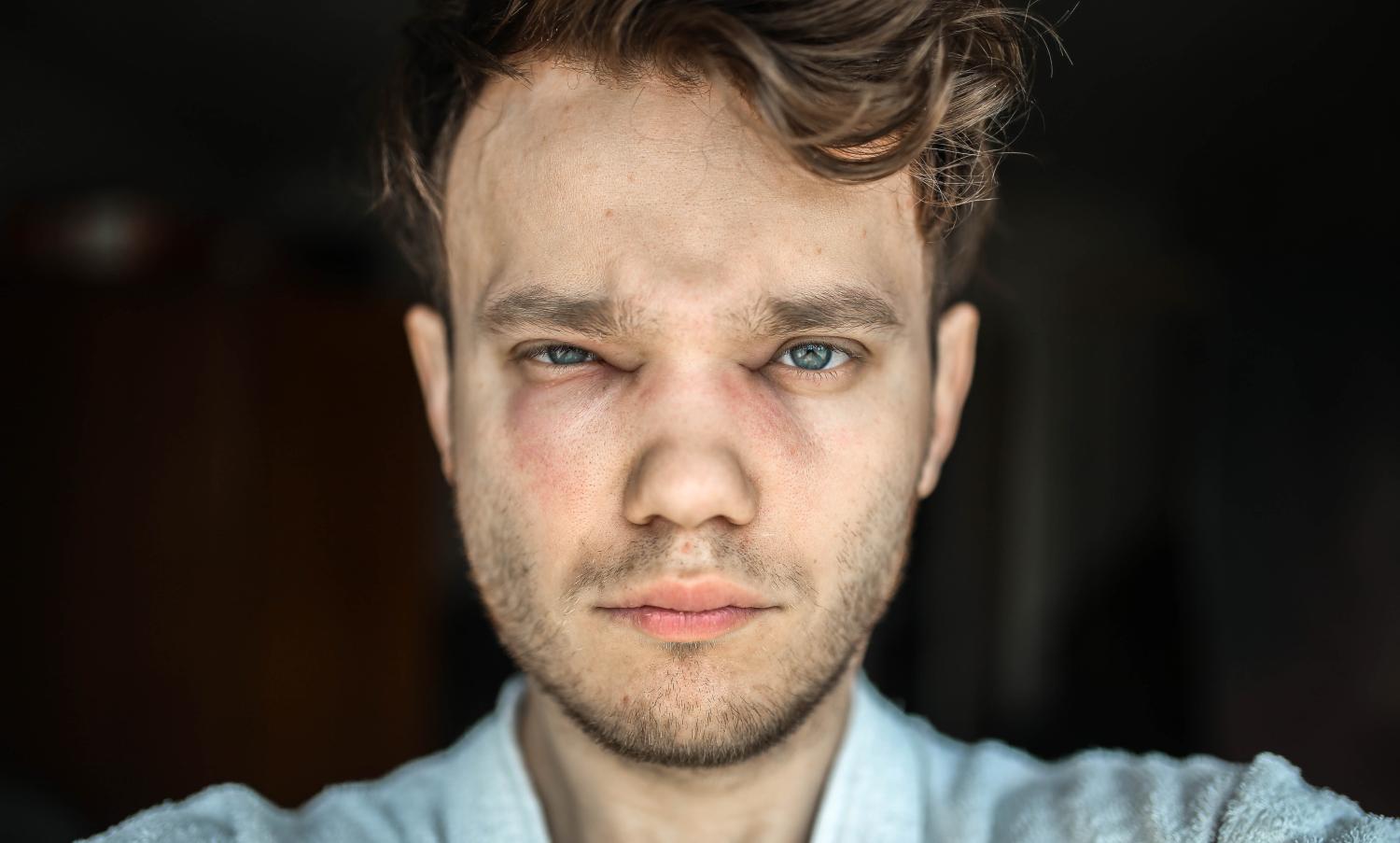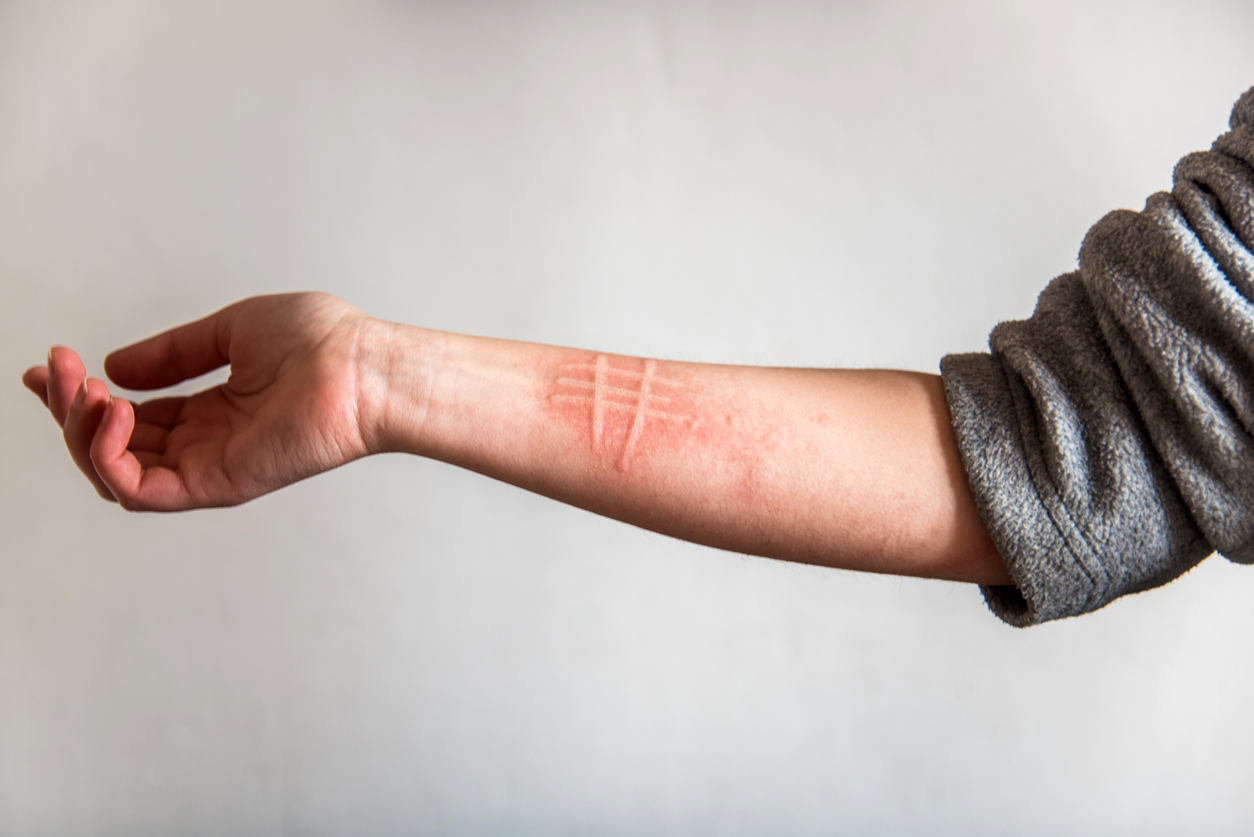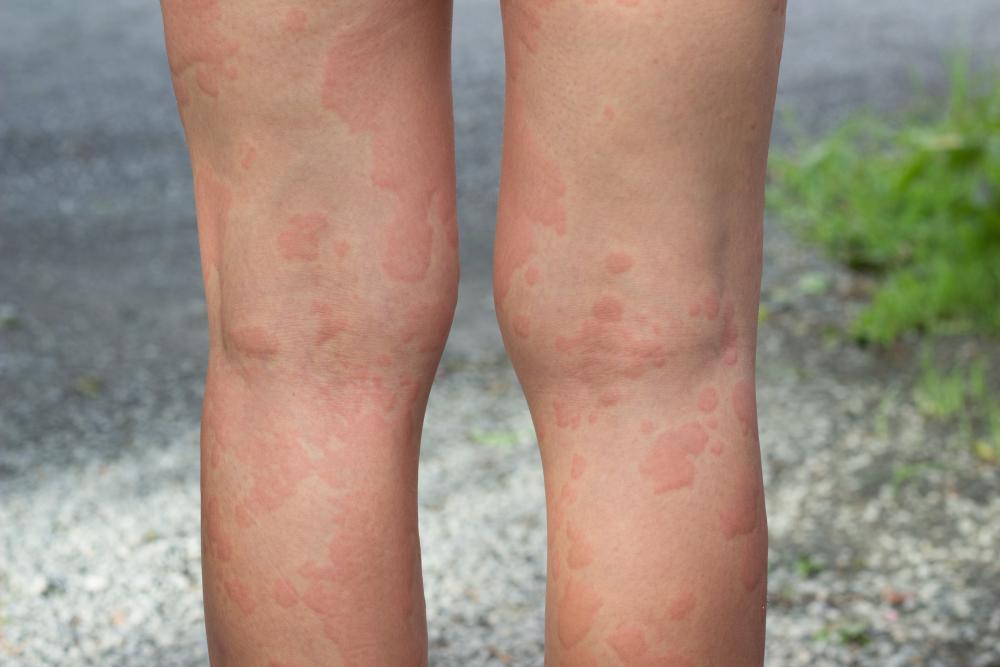Chronic urticaria (hives)
Urticaria is a skin condition characterized by an itchy and/or burning rash composed of hives/welts that appear and disappear. Chronic hives are defined as hives that occur most days of the week and persist for longer than six weeks. Chronic urticaria can manifest as either spontaneous or inducible, and these forms may occur simultaneously.

Image: iStock
About chronic urticaria
Urticaria is also known as hives. Hives is a common skin condition characterized by itchy swellings (hives/welts) on the skin. Hives can occur anywhere on the skin, and there can be many reasons for their occurrence.
The three main types of urticaria are acute, chronic inducible and chronic spontaneous.
In individuals with light skin, chronic urticaria typically presents as red or pink raised bumps or circular welts. However, in individuals with skin of color, the appearance of hives may differ. Instead of appearing red, they may blend in with the surrounding skin tone or appear slightly lighter or darker.
THE DIAGNOSIS of chronic urticaria is established through a combination of the medical history provided by the patient and a clinical examination of the skin conducted by the doctor. As flare-ups of chronic urticaria can be transient, you might not always experience severe symptoms during your doctor visits. Consequently, it could be beneficial for you to take pictures of your skin during outbreaks, allowing you to illustrate your condition to the doctor during your next appointment.
Urticaria is not contagious.
Causes
Urticaria is caused by the release of immune mediators, such as histamine, into your bloodstream. When this release happens in the outer layers of the skin, it results in hives. It's often not known why chronic hives happen or why acute hives sometimes turn into a long-term problem. Chronic urticaria is not due to allergies, and therefore, an allergic evaluation is not necessary.
Chronic urticaria can be divided into two types:
- Chronic spontaneous urticaria is not triggered by external factors. This type accounts for approximately 90% of chronic urticaria cases.
- Chronic inducible urticaria I caused by certain environmental and physical factors (e.g., heat, cold, scratching, or pressure).
Symptoms and localization
THE SYMPTOMS appear on the skin in the form welts/hives. Welts can arise anywhere on the body and might be red, purple or skin-colored, depending on your skin color. The hives are well-defined and slightly raised, appearing as visible swellings on the skin. Hives can vary in size, change shape and fade repeatedly. The skin/hives often feels itchy, tender or sometimes painful to the touch.
ACUTE OR CHRONIC. In acute urticaria, the rash and itching usually subside within 12-24 hours, but outbreaks can come and go for up to six weeks. If symptoms are present most days of the week and last longer than 6 weeks, it is considered chronic.
ANGIOEDEMA can occur with urticaria. Angioedema is swelling in the deeper layers of the skin and most often occurs in the eyelids and lips. With angioedema, a burning or pressing sensation is more common than itching. Swelling from angioedema can last up to three days.


Images: Angioedema on the face (to the left), urticaria triggered by scratching (dermographism) (to the right) (iStock)
Prevalence of urticaria
Chronic urticaria is a rare condition. It is estimated that about 1 % of the population is affected, and it affects women twice as often as men. The condition often begins in adulthood.
Acute urticaria can occur in all age groups, in both men and women. Approximately 15-20 % of the population will experience acute urticaria at some point in their lives.

Image: urticaria on the backside of the legs (iStock)
Prognosis and treatment
THE PROGNOSIS is good with proper treatment and by avoiding triggering factors. It usually goes away by itself over a period of weeks, months or even years. It may not be possible to get rid of chronic hives simply by avoiding triggers. Sometimes you may not know the trigger at all. In these cases, disease management focuses on the most appropriate treatment to control symptoms.
TREATMENT typically consists of several steps aimed at achieving symptom control. A correct diagnosis is a prerequisite for initiating the right treatment. The first line of treatment for most cases of chronic urticaria is a long-lasting antihistamine, in addition to avoiding triggers. If antihistamines are not effective enough, systemic treatment by a dermatologist is an option.
A life with chronic urticaria
Living with chronic urticaria can be incredibly challenging, as it impacts not only your physical well-being but also your mental health and relationships. Studies have demonstrated that optimizing treatment for chronic urticaria can significantly improve the quality of life for patients.
One of the most important things you can do is partner with your healthcare team to find the most effective treatment for your chronic urticaria. If your symptoms are better controlled, it will be easier to cope with the disease.
Learn more about your rights as a patient with a chronic disease here!
Do you have any questions about your rights as an individual with a chronic illness? Call The Norwegian Federation of Organizations of Persons with Disabilities (FFO) Rights center at Tel. +47 23 90 51 55.
